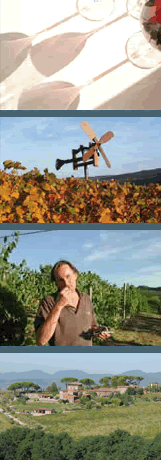

Demand: Pinot Noir for Decanter Awards by Joel B. Payne
Deadline: 19.07.2010
Length: 500 words
Title:
Pinot Noir with a German twang
Standfirst:
Is it natural evolution, a new generation of winemakers or global warming? Whatever the reason, the rise in quality of German red wine production over the past generation has altered the domestic landscape and is slowly making itself felt abroad, where German Pinot Noirs are winning accolades and taking home trophies. For the third year in a row, they shone at our Decanter World Wine Awards.
Text:
Few foreign collectors would ever mention red wine when they reflect on the soil where Goethe, Beethoven and Einstein once tread. In fact, though, Germany boasts the 3rd largest plantings of Pinot Noir in the world, after France and the United States, and produces more Pinot Noir than Australia and New Zealand combined.
Most of these vineyards are found in Baden in the southwestern corner of the country at about the same latitude as Burgundy, albeit two hundred kilometers further east. As in Alsace just across the Rhine, the weather patterns in autumn are warm and dry, so that Pinot Noir can be crushed at about the same time as in Beaune.
Although the oldest written records of Pinot Noir in Baden date from 1285, the first vines were probably brought by Cistercian monks from Citeaux in 1161. The chalky red soils that they found in Malterdingen, where they planted vineyards for the abbey, were similar to some they so appreciated in Burgundy; but southwestern Germany is a patchwork quilt of individual sites and soils that is as complex as the Côte d’Or itself.
It is often said that the German red wine revolution began in 1990, a vintage many producers still cite as a turning point in their thought processes. Even the cooperative in Königshaffhausen was exciting then, but today it is estates like Bercher, Huber, Salwey or Fritz (see our trophy) and Martin Wassmer who are leading the charge in Baden – and whose best wines are hardly distinguishable from fine Burgundy, with the one more reminiscent of Volnay, the second of Vosne-Romanée and the third of Gevrey-Chambertin. The gradual move from monolithic tasting Geisenheim clones to more nuanced French cuttings in the vineyards has only accelerated the evolution.
At the northern end of the country, on the Ahr, a more Germanic expression holds sway. Global warming has certainly favoured Pinot Noir’s renaissance here, making true physiological ripeness feasible almost every year. On the middle stretches of the river, it is Deutzerhof, Stodden, Adeneuer and Meyer-Näkel (see our gold medal) who carry the torch. Although they may still have a ways to go in matching their choice of rootstock and clones to their sites, and sometimes still struggle with the right use of oak, there is no question that Pinot Noir has come of age here, albeit with an expression that is uniquely German. On the slate soils of their steepest vineyards, Pinot Noir develops a succulent richness paired with smooth tannins and a vibrant fruit architecture that is not found anywhere else in the world. Observing the breathtaking prices bid at a recent auction by local collectors, Hugh Johnson remarked with a wry smile that this was a “surprising niche market.”
So is there a distinctly German philosophy to Pinot Noir that is different from that of the French? Although I would once have answered yes, today I am less sure. The finest vintners have learned from their peers and now bottle wines that speak the language of Pinot Noir with at most a slight German twang; but that sense of place is something that none of us would want to miss.
